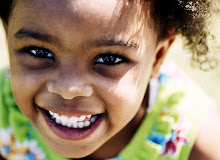
Sometimes it's hard to know what we should be doing to help our kids be ready to learn once they enter school. (The easiest answer is simply to read to your child. It's never too early to start!) Parents and caregivers often wonder if their child is developing appropriately and if everything is "going right".
The Early childhood Indicators of Progress is a place to find answers for your questions. The Indicators give a basic snapshot of where children should be at various stages of their development. The Minnesota Department of Education released the first set of indicators for children ages 3-5 in 2003. In 2005 an updated version was released. The goal of these indicators is to give:
"A framework for understanding and communicating a common set of developmentally appropriate expectations for children in the preschool period of ages three to five, presented within a context of shared responsibility and accountability for helping children meet these expectations."All that to say it's a tool to help family members, teachers and caregivers, community members and policy makers have a general idea of what kids should be able to do or be learning how to do when they are in preschool. View the Early Childhood Indicators of Progress here.
In 2007 the Minnesota Departments of Human Services and Health released Early Learning Guidelines for children birth to 3. These guidelines are similar to the Indicators of Progress for 3 -5 year olds, but are described in a more developmentally appropriate way for infants and toddlers. You can see the Birth to 3 Guidelines here.
By using these tools, we can know how we can help children grow and develop so that they will be ready for kindergarten and for life!
What do you think? After you have a chance to look at the Indicators and Guidelines, do you find them helpful?






No comments:
Post a Comment